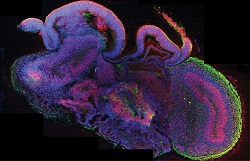Elucidating apoptosis pathways for innovative therapy in AIDS and cancer
Cancer and AIDS constitute the two leading causes of mortality worldwide, with millions of sufferers and a high socioeconomic impact. Most therapeutic modalities against cancer aim to induce cell death via various mechanisms. Apoptosis can be triggered via signalling by death receptors or absence of signalling by dependency receptors at the plasma membrane (also called the extrinsic pathway). The intrinsic pathway (also called 'stress pathway' or 'mitochondrial pathway') of apoptosis is initiated anywhere in the cell. Furthermore, cell death can be a result of non-apoptotic signalling pathways like caspase-independent necrosis, autophagy, mitotic catastrophe — processes mainly associated with pathological cell death. The EU-funded APO-SYS project brought together leading European scientists to investigate the cell-death pathways in human diseases. The consortium employed in silico, in vitro and in vivo methods to obtain invaluable information that was subsequently integrated with experimental results from patient samples. One of the major goals of the APO-SYS consortium was to construct maps and mathematical models of pathways governing cell death and their interactions. To this end, computational tools were generated for modelling cell fate decisions in response to death receptor engagement. Using the experimental data of the consortium, maps of two cell-death pathways (the extrinsic TRAIL pathway and the intrinsic pathways) were generated. These were networked with cell-death pathways stemming from DNA damage due to chemotherapy-induced double-strand breaks, necrosis and lysosomes. Major efforts were also directed towards understanding how cells decide on different cell-death modalities and what proteins they use for such decisions. Lung cancer proteomics data from patient samples enabled the identification of some S100 protein family compounds with prognostic significance for cancer development and survival. In the case of colorectal cancer, partners pioneered a systems model of apoptosis for predicting individual patient response to chemotherapy. This model confirmed that cancer cells may undergo apoptosis at lower doses than normal cells, a phenomenon associated with better prognosis. Study of the apoptosis pathways activated by HIV infection revealed that infected CD4+ T cells were more susceptible to pro-apoptotic signals mediated by interferon induction. Collectively, APO-SYS findings contributed to the refinement of cell death models, and provided novel prognostic and predictive disease parameters. The generated information could be used to improve existing treatments and identify novel targets for personalised therapeutic modulation of apoptosis.






